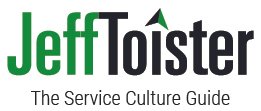Q: Tell me about some of the ways you help contact center professionals connect with each other to learn and grow?
"Customers like to connect with their favorite brands in many ways, and our members like to connect with ICMI and each other in many ways too.
"One of my favorites is the weekly ICMI Chat on Twitter [Tuesday's at 10am Pacific, #icmichat]. The discussion revolves around a new topic each week and participants provide a lot of fun and insightful commentary. It's even led to a sort of mastermind community where people connect outside of the weekly chat to discuss challenges and share ideas. A lot of regular participants have had a chance to meet in person at ICMI conferences and have become good friends, which is fun too.
"We've just launched our ICMI book club on Goodreads. A couple of people mentioned they were thinking of starting a book club in their contact centers, so I thought it might be a good idea for ICMI. Our industry has such a thirst for knowledge, and books are a great way for directors, managers, supervisors, and agents to learn new ideas. Each month, we'll feature a new book and have a live discussion with the author at the end of the month. The first book is The Culture Engine by Chris Edmonds.
"We also publish original case studies and articles, a weekly newsletter, and host the annual Contact Center Expo and Contact Center Demo conferences."
Note: You can save $200 on the upcoming Contact Center Expo conference when you use the code SPKR at checkout.
Q: You seem to be everywhere at those conferences! What's your primary goal while you're there?
"My top priority is to meet as many people as possible. I enjoy hearing from them and what their struggles are because it helps me do a better job. I’m passionate about helping people overcome those struggles.
"I also try to maintain our social presence at the conferences. There are a lot of great discussions happening on the conference's Twitter backchannel [note: the backchannel refers to the conference's Twitter hashtag, such as #ccexpo]. I've learned there are even more people who aren't necessarily active participants in those online discussions, but they're still actively listening."
Q: What do you see top contact centers doing that others don't necessarily do?
"The most successful contact centers treat their employees like adults. They empower them by giving them the tools and resources they need to serve their customers, and they don't chain them down with rigid scripts or cumbersome policies.
"If you hire people you trust, you need to trust them.
"Employee engagement is a top priority for leading contact centers. They don't get too bogged down in tactics or employee satisfaction. These contact centers understand that engaged employees are self-motivated and invested in the mission of the company.
"To do that, employees need to know the mission. In The Culture Engine, this month's book club book, the author talks about having a 'cultural constitution' that spells out the company culture and what behaviors are expected.
"It's so easy to get stuck focused on metrics, that contact center leaders often forget to focus on people. The best contact centers have an employee engagement champion who is constantly making sure this is a priority."
Q: What do you think are some unique aspects about serving customers in a contact center?
"I didn't have any contact center experience before I joined ICMI, but I quickly learned to appreciate what these professionals do every day. It's such a relatable industry because we've all been on the receiving end of a contact center's customer service.
"What really stands out for me is the passion. People are hungry to learn, improve, and share their experiences. You've got to have a servant leader's heart to be successful in this industry."
Q: Is there something about contact centers you wish other people knew?
"People need to realize the great value that contact centers provide.
"In many cases the contact center is the company's first and primary point of communication with customers. Agents have a big opportunity to create a positive impression of the company in their customers' minds. The contact center also collects an awful lot of customer data that the marketing department, R&D team, and even the CEO should be paying attention to.
"Too many organizations think of the contact center as a cost center where expenses need to be minimized, but the contact center is really one of the most customer-focused aspects of any company."













